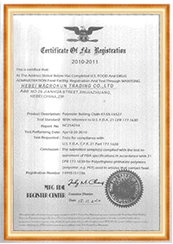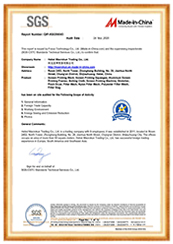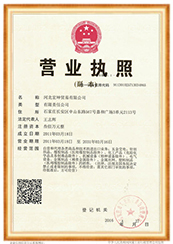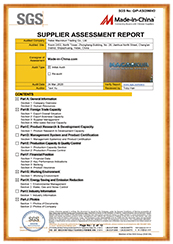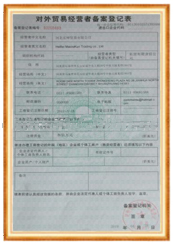When it comes to choosing the right nylon mesh for filter screens, there are several factors to consider. One of the most important considerations is the type of nylon mesh material that will be used. Nylon mesh materials come in a variety of types, each with its own unique properties and characteristics that make them suitable for different applications.
One of the most common types of nylon mesh materials used for filter screens is monofilament nylon. Monofilament nylon is a single strand of nylon that is woven together to create a mesh material. This type of nylon mesh is known for its high strength and durability, making it ideal for applications where the filter screen will be subjected to heavy use or high pressure.
Another type of nylon mesh material that is commonly used for filter screens is multifilament nylon. Multifilament nylon is made up of multiple strands of nylon that are woven together to create a mesh material. This type of nylon mesh is known for its flexibility and ability to conform to irregular shapes, making it ideal for applications where the filter screen needs to be molded or shaped to fit a specific space.
In addition to monofilament and multifilament nylon, there are also specialty nylon mesh materials that are designed for specific applications. For example, conductive nylon mesh materials are used in applications where static electricity needs to be controlled, while flame-retardant nylon mesh materials are used in applications where fire safety is a concern.
| Type | Mesh Count (/cm) |
Mesh Count (/inch) |
Thread Dia (um) |
Mesh Opening (um) |
Thickness (um) |
Gross Weight (g/m2) |
| NL4/1950 | 4 | 10 | 550 | 1950 | 1100 | 307 |
| NL5/1500 | 5 | 13 | 500 | 1500 | 1000 | 318 |
| NL6/1267 | 6 | 15 | 400 | 1267 | 800 | 244 |
| NL7/1079 | 7 | 18 | 350 | 1079 | 700 | 218 |
| NL8/900 | 8 | 20 | 350 | 900 | 700 | 249 |
| NL9/861 | 9 | 23 | 250 | 861 | 500 | 143 |
| NL9/811 | 9 | 23 | 300 | 811 | 600 | 206 |
| NL10/750 | 10 | 25 | 250 | 750 | 500 | 159 |
| NL10/700 | 10 | 25 | 300 | 700 | 600 | 229 |
| NL12/583 | 12 | 30 | 250 | 583 | 500 | 191 |
| NL12/533 | 12 | 30 | 300 | 533 | 600 | 274 |
| NL14/514 | 14 | 36 | 200 | 514 | 340 | 142 |
| NL16/425 | 16 | 40 | 200 | 425 | 340 | 160 |
| NL20/350 | 20 | 50 | 150 | 350 | 255 | 113 |
| NL20/300 | 20 | 50 | 200 | 300 | 340 | 200 |
| NL24/267 | 24 | 60 | 150 | 267 | 255 | 135 |
| NL28/237 | 28 | 70 | 120 | 237 | 204 | 101 |
| NL30/213 | 30 | 76 | 120 | 213 | 204 | 110 |
| NL32/213 | 32 | 80 | 100 | 213 | 170 | 80 |
| NL36/178 | 36 | 90 | 100 | 178 | 170 | 90 |
| NL40/150 | 40 | 100 | 100 | 150 | 170 | 100 |
| NL43/153 | 43 | 110 | 80 | 153 | 136 | 70 |
| NL48/128 | 48 | 120 | 80 | 128 | 136 | 77 |
| NL56/119 | 56 | 140 | 60 | 119 | 102 | 50 |
| NL64/96 | 64 | 160 | 60 | 96 | 102 | 58 |
| NL72/89 | 72 | 180 | 50 | 89 | 85 | 45 |
| NL80/75 | 80 | 200 | 50 | 75 | 85 | 50 |
| NL100/57 | 100 | 250 | 43 | 57 | 73 | 46 |
| NL110/48 | 110 | 280 | 43 | 48 | 73 | 52 |
| NL120/48 | 120 | 300 | 35 | 48 | 60 | 37 |
| NL120/40 | 120 | 300 | 43 | 40 | 73 | 55 |
| NL130/42 | 130 | 330 | 35 | 42 | 60 | 40 |
| NL130/34 | 130 | 330 | 43 | 34 | 73 | 61 |
| NL140/36 | 140 | 350 | 35 | 36 | 60 | 43 |
| NL157/25 | 157 | 400 | 43 | 25 | 73 | 74 |
| NL180/20 | 180 | 450 | 39 | 20 | 66 | 68 |
| NL200/15 | 200 | 500 | 39 | 15 | 66 | 76 |
| NL220/10 | 220 | 550 | 39 | 10 | 66 | 84 |
| NL240/5 | 240 | 600 | 39 | 5 | 66 | 91 |
When choosing the right nylon mesh material for a filter screen, it is important to consider the specific requirements of the application. Factors such as the level of filtration needed, the operating temperature and pressure, and the chemical compatibility of the nylon mesh material with the substances being filtered should all be taken into account.
It is also important to consider the mesh size and weave pattern of the nylon mesh material. The mesh size refers to the size of the openings in the mesh material, which determines the level of filtration that the filter screen can provide. The weave pattern refers to the way in which the strands of nylon are woven together, which can affect the strength, flexibility, and durability of the mesh material.
In conclusion, choosing the right nylon mesh material for filter screens is an important decision that should not be taken lightly. By considering factors such as the type of nylon mesh material, the specific requirements of the application, and the mesh size and weave pattern, you can ensure that you select a nylon mesh material that will provide the level of filtration and performance needed for your application.
When it comes to choosing the right nylon mesh for filter screens, there are several factors to consider in order to ensure optimal performance and longevity. Nylon mesh is a popular choice for filter screens due to its durability, flexibility, and resistance to chemicals and abrasion. However, not all nylon meshes are created equal, and selecting the right one for your specific application is crucial.
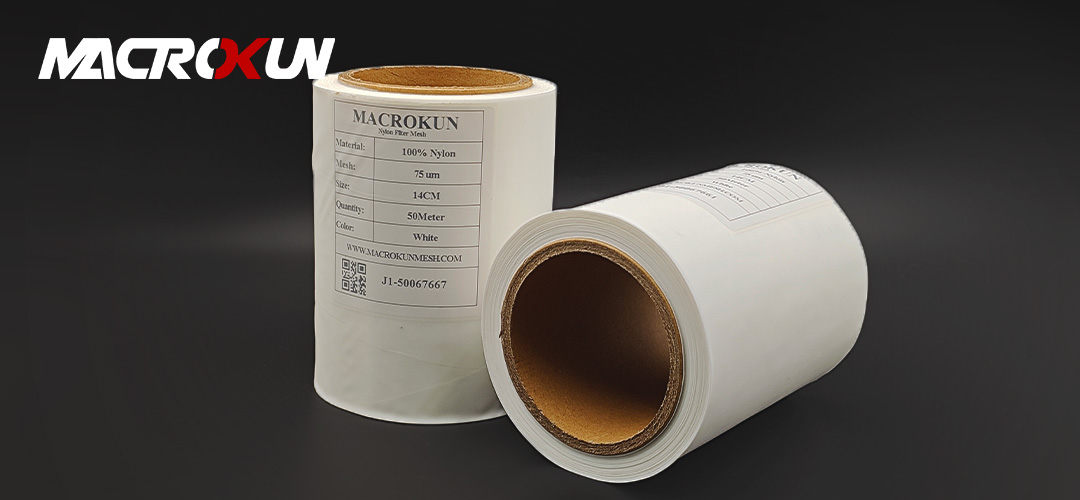
One of the first factors to consider when choosing nylon mesh for filter screens is the mesh size. Mesh size refers to the number of openings per linear inch in the mesh. The smaller the mesh size, the finer the filtration will be. If you are filtering out very small particles, such as in the pharmaceutical or food industries, a finer mesh size will be necessary. On the other hand, if you are filtering larger particles, a coarser mesh size may be sufficient.
Another important factor to consider is the mesh weave. Nylon mesh can be woven in a variety of patterns, including plain weave, twill weave, and Dutch weave. Each weave has its own unique characteristics and is suited for different applications. For example, plain weave nylon mesh is the most common and versatile weave, while Dutch weave nylon mesh is ideal for applications requiring high filtration efficiency.
The material of the nylon mesh is also an important consideration. Nylon mesh can be made from different types of nylon, such as nylon 6 or nylon 6/6. Nylon 6 is more flexible and has a higher elongation at break, making it ideal for applications requiring flexibility. Nylon 6/6, on the other hand, is more rigid and has a higher tensile strength, making it suitable for applications requiring strength and durability.
In addition to mesh size, weave, and material, it is also important to consider the micron rating of the nylon mesh. The micron rating refers to the size of the particles that the mesh can filter out. A lower micron rating indicates a finer mesh that can filter out smaller particles. It is important to choose a nylon mesh with the appropriate micron rating for your specific application to ensure effective filtration.
When selecting a nylon mesh for filter screens, it is also important to consider the operating temperature and chemical compatibility of the mesh. Nylon mesh is resistant to many chemicals, but it is important to ensure that the mesh is compatible with the chemicals present in your application. Additionally, nylon mesh has a maximum operating temperature, and it is important to choose a mesh that can withstand the temperatures present in your application.
In conclusion, choosing the right nylon mesh for filter screens is essential for ensuring optimal performance and longevity. By considering factors such as mesh size, weave, material, micron rating, operating temperature, and chemical compatibility, you can select a nylon mesh that is well-suited for your specific application. Taking the time to carefully evaluate these factors will help you choose a nylon mesh that meets your filtration needs and provides reliable performance.
Nylon mesh filter screens are widely used in various industries for their durability, flexibility, and efficiency in filtering out particles of different sizes. Choosing the right nylon mesh for filter screens is crucial to ensure optimal performance and longevity of the filter. In this detailed guide, we will explore the common applications of nylon mesh filter screens and provide insights on how to select the right mesh for your specific needs.
One of the most common applications of nylon mesh filter screens is in the food and beverage industry. Nylon mesh filters are used to remove impurities and contaminants from liquids such as juices, wines, and oils. The fine mesh size of nylon filters ensures that even the smallest particles are captured, resulting in a clean and pure end product. In this industry, it is essential to choose a nylon mesh with a high mesh count to achieve the desired level of filtration.
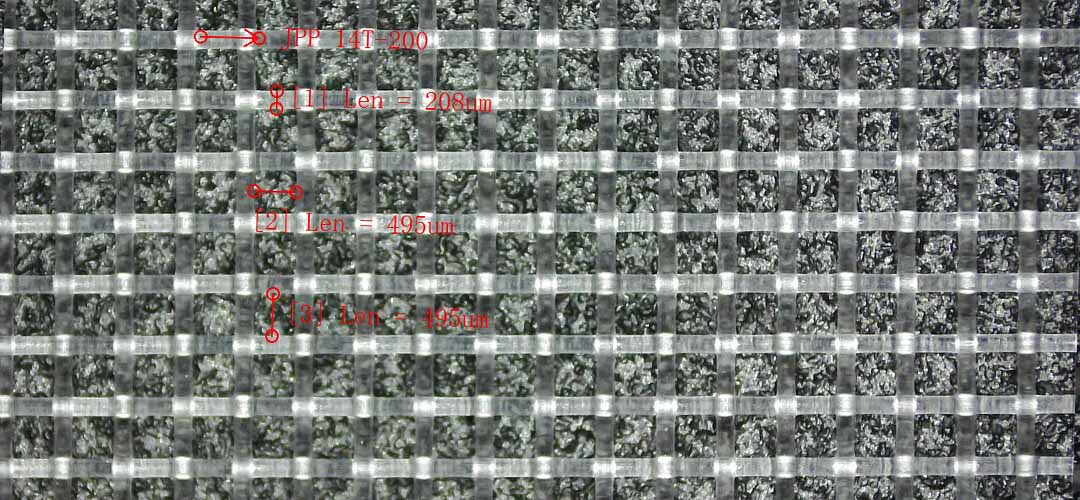
Another common application of nylon mesh filter screens is in the pharmaceutical industry. Nylon filters are used to remove bacteria, viruses, and other microorganisms from liquids and gases in pharmaceutical manufacturing processes. The high tensile strength and chemical resistance of nylon make it an ideal material for these critical applications. When selecting a nylon mesh for pharmaceutical filtration, it is important to consider factors such as pore size, flow rate, and compatibility with the substances being filtered.
Nylon mesh filter screens are also widely used in the automotive industry for filtering fluids such as fuel, oil, and coolant. Nylon filters help to prevent contaminants from entering the engine and other critical components, thereby extending the lifespan of the vehicle. When choosing a nylon mesh for automotive applications, it is important to consider factors such as temperature resistance, chemical compatibility, and particle retention efficiency.
In the manufacturing industry, nylon mesh filter screens are used in a wide range of applications, including water treatment, air filtration, and industrial processes. Nylon filters are known for their high strength, flexibility, and resistance to abrasion, making them suitable for demanding industrial environments. When selecting a nylon mesh for manufacturing applications, it is important to consider factors such as mesh size, weave pattern, and material thickness to ensure optimal performance and longevity.
Overall, choosing the right nylon mesh for filter screens requires careful consideration of various factors such as mesh size, material properties, and application requirements. By understanding the common applications of nylon mesh filter screens and the specific needs of your industry, you can make an informed decision that will result in efficient filtration and long-lasting performance. Whether you are in the food and beverage, pharmaceutical, automotive, or manufacturing industry, selecting the right nylon mesh filter screen is essential for achieving optimal results.
When it comes to maintaining filter screens, choosing the right nylon mesh is crucial for ensuring optimal performance and longevity. Nylon mesh filter screens are commonly used in a variety of industries, including food and beverage, pharmaceutical, and chemical processing. The key to selecting the right nylon mesh lies in understanding the specific requirements of your application and choosing a mesh that meets those needs.
One of the first factors to consider when selecting nylon mesh for filter screens is the mesh size. Mesh size refers to the number of openings per inch in the mesh. The smaller the mesh size, the finer the filtration. For applications that require fine filtration, a smaller mesh size is recommended. Conversely, for applications that require larger particles to pass through, a larger mesh size is more suitable.
Another important consideration when choosing nylon mesh for filter screens is the mesh weave. Nylon mesh is available in a variety of weave patterns, including plain weave, twill weave, and Dutch weave. Each weave pattern offers different filtration characteristics, so it’s important to select a weave pattern that aligns with your specific filtration requirements.
In addition to mesh size and weave pattern, the material of the nylon mesh is also an important factor to consider. Nylon mesh is known for its durability and resistance to chemicals, making it an ideal choice for filter screens in harsh environments. However, it’s important to ensure that the nylon mesh is compatible with the substances being filtered to prevent damage and ensure optimal filtration performance.
When it comes to maintaining nylon mesh filter screens, regular cleaning and inspection are essential. Over time, debris and contaminants can accumulate on the mesh, reducing its effectiveness. To prevent clogging and ensure proper filtration, it’s important to clean the mesh regularly using a mild detergent and water. Additionally, inspecting the mesh for signs of wear and tear, such as tears or holes, can help prevent potential issues and prolong the life of the filter screen.
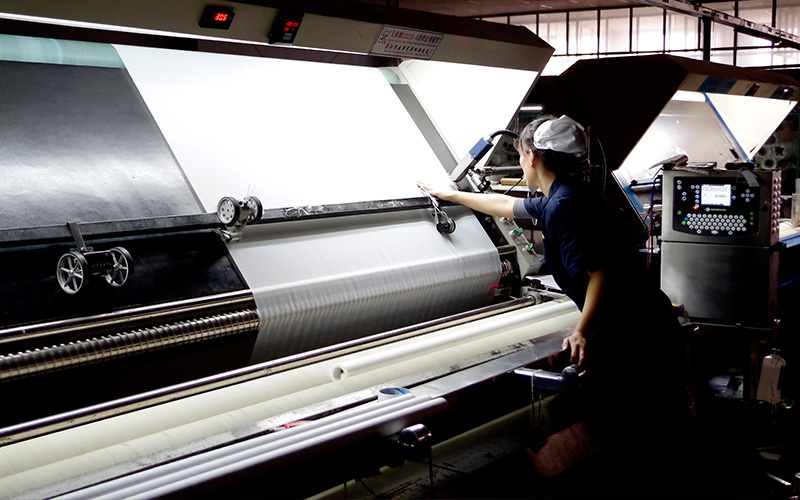
In some cases, it may be necessary to replace the nylon mesh filter screen altogether. Signs that indicate the need for replacement include excessive clogging, tears or holes in the mesh, and reduced filtration efficiency. When replacing the nylon mesh, be sure to select a mesh that meets the same specifications as the original to ensure proper filtration performance.
In conclusion, choosing the right nylon mesh for filter screens is essential for maintaining optimal filtration performance. By considering factors such as mesh size, weave pattern, and material compatibility, you can select a nylon mesh that meets the specific requirements of your application. Additionally, regular cleaning and inspection of the nylon mesh filter screen can help prevent issues and prolong its lifespan. By following these maintenance tips, you can ensure that your nylon mesh filter screens continue to provide reliable filtration for years to come.
Pre: Top Features of Micron Nylon Mesh Tubing for Efficient Filtration
Next: Why Kain Nylon Plankton Net Mesh 400 37 Mikron is Ideal for Marine Research

MACROKUN has established long-term and stable cooperative relations with many transportation companies such as China Post, DHL, FEDEX, USPS, UPS, etc. Of course, MACROKUN can also provide air and sea transportation. The powerful logistics system enables all MACROKUN'S Printing Mesh, Filter Mesh and Filter Bags and so on to be easily and efficiently transported to any place. For quotes and inquiries, please email our sales team.
